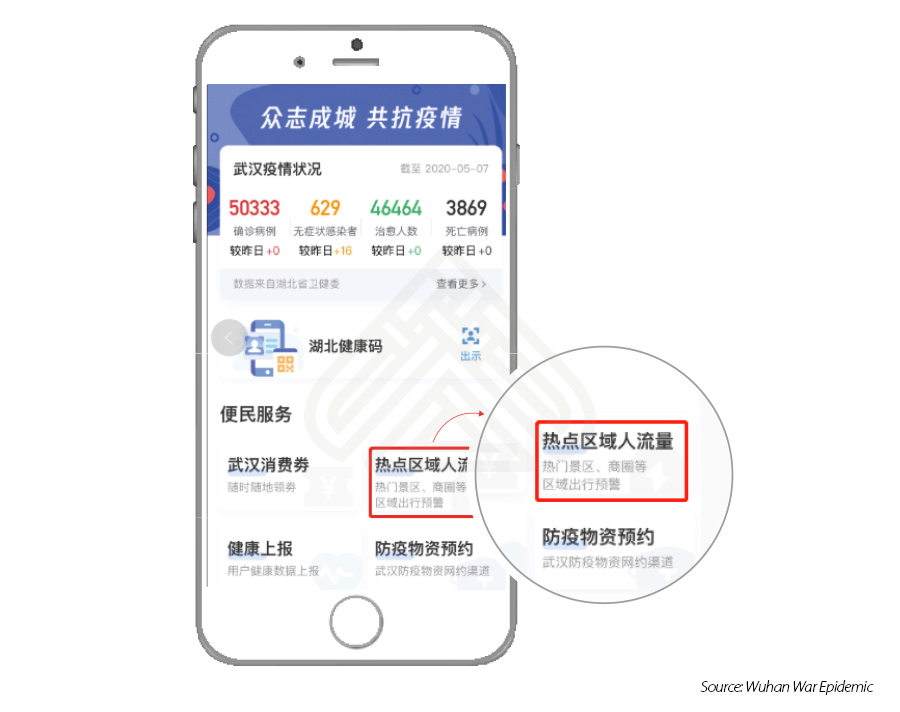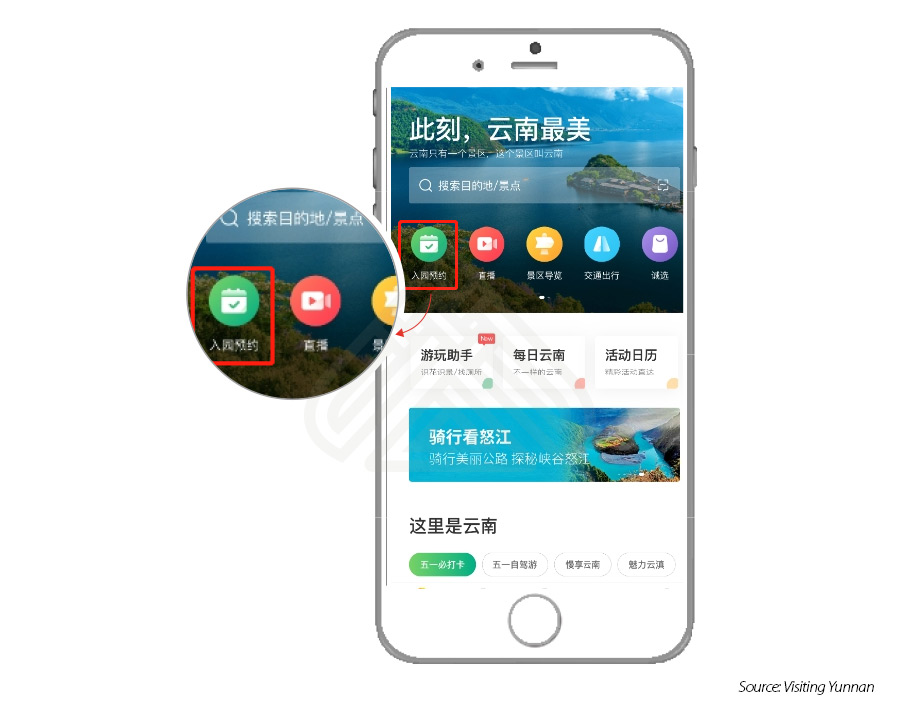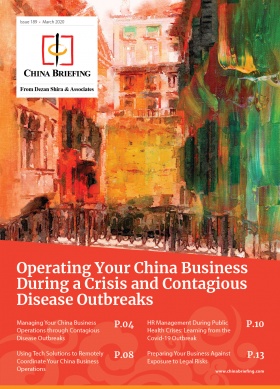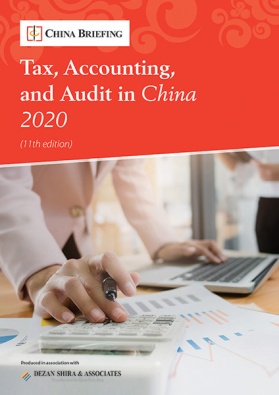China’s Tourism Industry Sees Signs of Revival Over Labor Day Holiday
This week, China celebrated its National Labor Day — the first nationwide holiday since the lockdown lifts and the relaxation of domestic travel restrictions.
During this period, the tourism, recreational and cultural sectors, which had been severely afflicted since the start of the coronavirus outbreak, exhibited strong signs of recovery.
Owing in part to the longer holiday duration and the gradual uptick in consumer confidence – this year’s holiday showed promising signs of revival for the tourism sector in particular, having suffered through a three-month lull.
As of May 5, the country saw 115 million trips being taken, resulting in RMB 47.56 billion (US$6.74 billion) in revenue for travel operators, said the Ministry of Culture and Tourism.
Despite being a significant decrease from the 195 million trips taken in the same period last year, travel figures for this May more than doubled from the 43 million trips taken over the Qingming Festival just this April.
Every year, in recognition and celebration of its workers, all workers in China are given a day off on May 1. This is usually accompanied by two extra days-off which are compensated through government-mandated ‘working days’ that typically fall on the weekend.
However, this year, the government had arranged for an unprecedented 5-consecutive-day holiday, the first time in 12 years, as a way to encourage more travel and spending during this period. (This will be compensated by working days distributed between the preceding and following weekends – April 26, Sunday and May 9, Saturday.)
As a much-anticipated barometer to consumer confidence in China, the Labor Day holiday offers a hopeful sign to market analysts and investors. It has shown that even the most adversely affected industries in China are starting to bounce back after the outbreak.
Major tourism statistics from the Labor Day holiday
According to the Ministry of Culture and Tourism – from Friday, May 1 to Tuesday, May 5 – the country recorded over 10 million travelers, resulting in 115 million trips across the country. The travel surge began to take shape from the first day of the holiday, as attractions nationwide received a total of some 23.2 million visits, generating RMB 9.77 billion (US$1.38 billion) in revenue for the day.
This far exceeded the estimates of travel operators leading up to the break – due to assumptions of low consumer confidence and the uncertainty surrounding domestic travel restrictions in the period leading up to the holiday.
As of May 1, 70 percent of tourist attractions had opened up for the holiday. Many large tourism attractions, such as Beijing’s Forbidden City, opened their grounds to the public for the first time following the three-month restriction period.
Despite this announcements being made only mere days before the holiday was due to begin, many large attractions still generated a large number of visitors. According to Qunar, an online travel agency based in Beijing, within a half-hour of the capital’s announcement about the relaxation of domestic travel, reservations for flights departing from Beijing surged fifteenfold.
In terms of revenue, travel operators recorded an almost fivefold increase in tourism revenue during the Labor Day Holiday when compared to the Qingming holiday – which brought in RMB 48 billion (US$6.78 billion) and RMB 8 billion (US$1.13 billion), respectively.
In this period, over 75 percent of accommodation providers had resumed their operations, while 70 percent of tourist sites in 10 provinces had reopened, according to data provided from the online ticketing platform Meituan.
New emerging travel trends and attitudes
Due to the current travel restrictions implemented in most countries worldwide, the budding excitement for travel in China has been directed towards domestic travel and more specifically in the east China region.
Most travelers opted to take shorter trips in or around the surrounding areas of their hometown. According to a report released by Lvmama, a popular travel agency in China that specializes in solo-travel, 30 percent of its users traveled in their hometown and 40 percent went to destinations within their province.
The 10 Labor Day destinations included cities such as Shanghai, Hangzhou, Suzhou, and Beijing,Shenzhen, Nanjing, and Changsha. However, as safety precautions were still a primary concern, tourism to usual hotspots like Xi’an and Kunming decreased significantly.
Another new trend that unfolded was the increase in self-guided tours, such as by rising car rentals, as they involved less contact with others. In line with this, daily traffic volume for trains, buses, ships, and airplanes dropped by more than half this year, according to the Ministry of Transport.
Perhaps more surprisingly, there were also more hotel bookings at four-and five-star hotels – as health and safety concerns spurred on demand for higher quality accommodation.
Safety and health priorities determine tourist activity
Though tourism is seeing a rapid recovery, much of the growth is still being tempered by the necessary health and safety precautions.
Local governments have had to walk a fine line between satisfying corporate interests and safeguarding the interests of the public.
In the weeks leading up to the holiday, the Ministry of Culture and Tourism and National Health Commission released a notice requiring domestic attractions to limit attendance to below 30 percent of their daily maximum visitor capacity during the holiday.
Similarly, new safety precautions, such as online reservations to tourist attractions, health code verification, contactless passenger admission, and passenger flow monitoring have become established practices at popular tourist destinations.
Health and safety remain key priorities among travelers, and businesses and governments have had to employ new methods of ensuring these needs are met.
One such example of this is the local government’s “Wuhan War Epidemic” WeChat Mini program. The mini program monitors and analyses the flow of travelers in real-time at well-known scenic spots and issues an early warning to travelers to avoid exceeding the recommended amount, or to divert passenger flows where necessary.
Similarly, the Yunnan provincial government’s “Visiting Yunnan” tourism App uses big data and cloud technology to detect when capacity has been reached and automatically stops ticket sales for the day.
It is still unclear whether these tech innovations will facilitate the recovery of consumer confidence during the transitional period or are here to stay.
However, what is clear is that, for now, safety remains the key priority among China’s travelers, and the tourism and hospitality industry must adapt and innovate according to manage their recovery in a more sustainable manner.
China’s economy is beginning to see signs of revival. Businesses in tourism, recreational, and cultural industries are steering a cautious but steady return to normalcy.
About Us
China Briefing is written and produced by Dezan Shira & Associates. The practice assists foreign investors into China and has done since 1992 through offices in Beijing, Tianjin, Dalian, Qingdao, Shanghai, Hangzhou, Ningbo, Suzhou, Guangzhou, Dongguan, Zhongshan, Shenzhen, and Hong Kong. Please contact the firm for assistance in China at china@dezshira.com.
We also maintain offices assisting foreign investors in Vietnam, Indonesia, Singapore, The Philippines, Malaysia, and Thailand in addition to our practices in India and Russia and our trade research facilities along the Belt & Road Initiative.
- Previous Article Securing Your China Remote Work Strategy Against Internet Vulnerabilities
- Next Article China Extends VAT Preferential Policy for Small-Scale Taxpayers to the End of 2020










